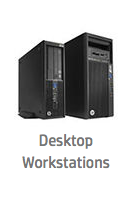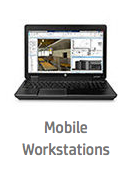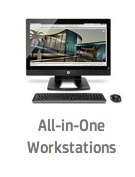The Mac vs PC debate feels like it’s been going on forever in media & entertainment. It’s a debate that has passionate defenders and opinions on both sides, but the unfortunate reality is that those same people often don’t realize what the other side has to offer. With hardware capabilities that change so quickly, it’s important to have solid info about what these systems can do to ensure you’re using the one that’s going to work best for you and your projects.
 That’s why we wanted to talk with someone who could give us detailed info about just what PC’s have to offer professionals at every level. Mike Diehl is the product manager for the HP Z Workstations, and as such has invaluable insights around how these machines can and do impact everyone from individual freelancers all the way through production houses that employ hundreds of people. He’s been with HP for a long time, and has some key insights around how the industry has developed in many different respects.
That’s why we wanted to talk with someone who could give us detailed info about just what PC’s have to offer professionals at every level. Mike Diehl is the product manager for the HP Z Workstations, and as such has invaluable insights around how these machines can and do impact everyone from individual freelancers all the way through production houses that employ hundreds of people. He’s been with HP for a long time, and has some key insights around how the industry has developed in many different respects.
We talked with Mike about the HP Z Workstation family of products, about how users can and have customized their machines, what sort of learning curve professionals are looking at when switching from a Mac environment and plenty more.
ProVideo Coalition: At a high level, what is it about the HP Z-Series Workstations that really make them stand out? How are they different from other available hardware solutions?
Mike Diehl: The focus of HP Z Workstation development is on improving the productivity of the world’s most demanding users of workstation computers. HP has been developing workstations for more than 30 years. In the beginning, workstations were based on proprietary hardware and software. In the late 90’s HP made the successful transition to PC-based workstations. HP is the only workstation vendor of the original four (SGI, Sun, IBM and HP) still producing workstations. The others didn’t make the transition. And not only did HP successfully navigate this transition, HP has achieved the #1 position in worldwide workstation shipments. We owe this to our deep customer intimacy and focus on meaningful innovation to create true customer value. HP Workstation customers help define our future products.
HP Z Workstations are designed and built for mission critical deployment. For workstation users, every minute of every day counts. When time is lost, schedules are compromised resulting in monetary losses. Lost productivity for workstation users is unacceptable. This is why Z Workstations employ many of the same types of components used in servers. Z Workstations are tested beyond industry standards to achieve 24x7x365 operation. During the testing of Z Workstations we test beyond the component manufacturer’s data sheet. In our workstations test lab, we subject components to rigorous testing to verify their performance under the most extreme conditions – conditions that far exceed normal operating conditions. This extreme testing helps HP deliver a solution with the best possible reliability for mission critical operation where down time is not an option. HP also sends systems to Independent Software Vendors (ISVs) for certification which further insures that any software or hardware issues are resolved prior first customer shipments.
In 2009 HP launched the Z Workstation brand and have since expanded our desktop and mobile workstation and professional display offerings to provide the broadest range of workstations available – from mobile to All-in-One to desktop along with a full range of professional displays including color-critical HP DreamColor displays.
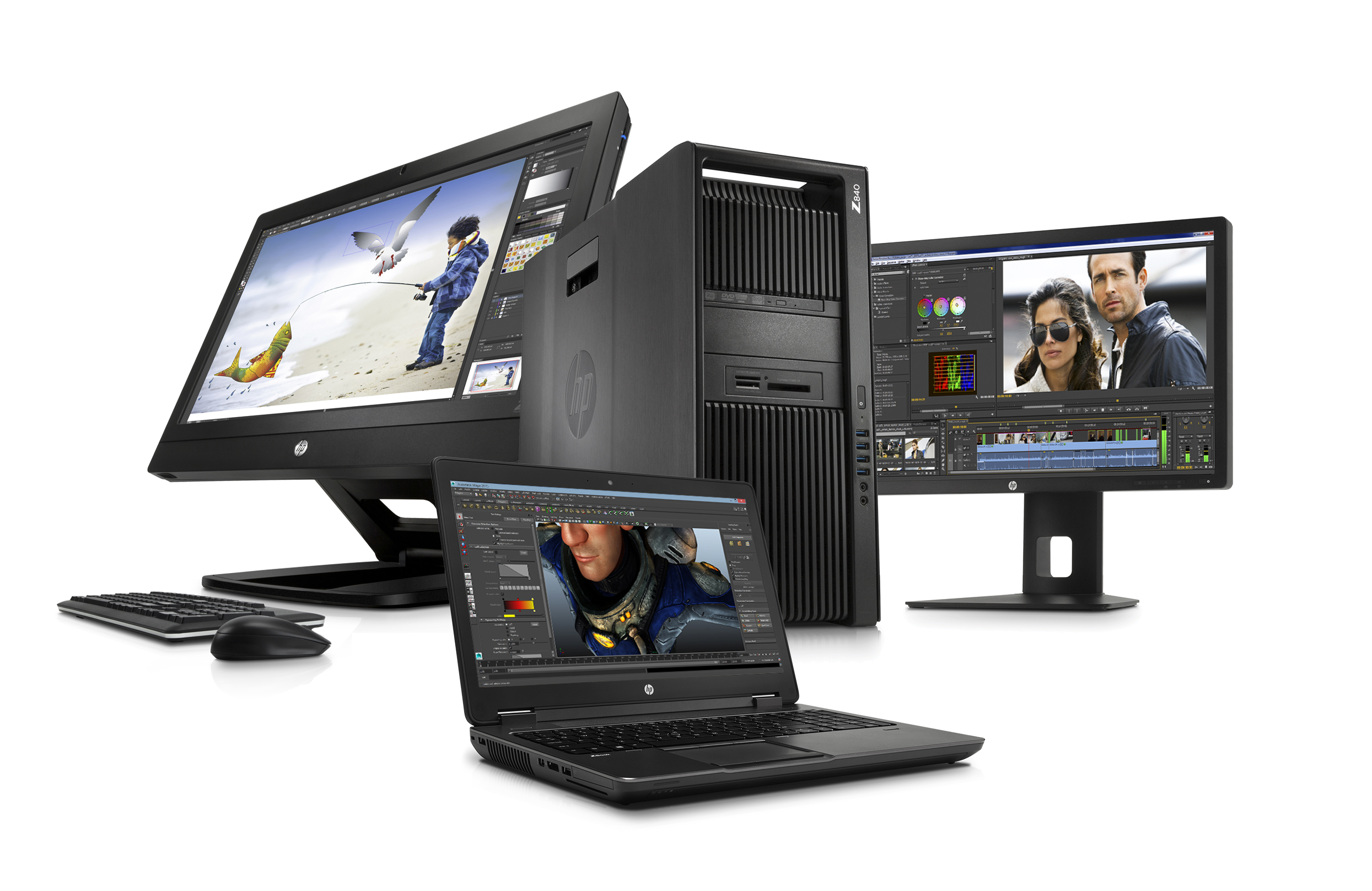 What’s one thing that people are surprised to find out about HP Z Workstations capabilities or performances?
What’s one thing that people are surprised to find out about HP Z Workstations capabilities or performances?
The HP Workstation product family of today represents a three decade legacy of engineering excellence and innovation. During this time, HP has worked with some of the most demanding users across a broad range of market segments – from clothing and running shoe design to race car and motorcycle design and mission-critical IT environments in the medical field and in trading billions of dollars of tradable securities.
The customer relationships we have forged has enabled continuous, evolutionary as well as revolutionary, improvements in our workstation family of products. HP has led the industry in the tool-less workstation design, developing workstations that are quiet yet provide extreme levels of performance, expandability and mission-critical reliability. The standard that HP Z Workstations has set for tool-less accessibility provide the ability to disassemble the entire system – down to the bare-bone chassis – without the use of any tools. This capability enables users to easily and quickly upgrade and/or swap out components thus improving overall productivity. High system noise levels are distracting and reduce user productivity levels. HP Workstations are designed, from the ground up, to eliminate excessive noise even under the most extreme operating levels. The thermal design techniques HP Workstation engineers employ improve air flow and cooling efficiency and have resulted in Z Workstations being the industry’s quietest workstations.
Another HP innovation is HP Performance Advisor. HP Performance Advisor is a software wizard, designed for non-technical users, which monitors various system performance attributes and provides the user with guidance on how to get the most out of the workstation. With just a few clicks of the mouse, the user can get visibility into what’s working great, what’s not and get the information needs to improve the system’s stability and performance. HP Performance Advisor comes pre-installed on every HP Z Workstation.
Let’s talk about the different HP Z-Series models. How are they organized, and what are the main differences between them? If I need to use high-performance software on a regular basis which model should I be focused on?
The HP Z Workstation family consists of five desktop models, three mobile models and an all-in-one workstation. The workstation(s) providing the best fit are dependent on the workload and usage model being employed. HP Z Workstations are designed as a family and many studios employ a mix of workstation models depending on the tasks they are targeted for. Below is a brief overview of the HP Z Workstation family.
-
Z230
- A great solution for current PC users who need workstation performance and reliability at a PC-like price and typically work on small to medium sized projects. The Z230 is available in two chassis: Small Form Factor (SFF) and Convertible Mini Tower (CMT)
-
Z440
- Well suited for engineers, architects and creative professionals who use graphics intensive applications for medium to large sized projects.
-
Z640
- Ideal solution for environments where a dual processor workstation is required but space is at a premium.
-
Z840
- Ideal for those users requiring maximum computing, graphics, memory, storage and I/O, such as simulation, computer-aided engineering. entertainment and financial services
-
ZBook 14
- This is world’s first workstation Ultrabook™ and is the ideal solution for those users who require workstation reliability while on the go but powerful enough to work on small projects
-
ZBook 15 G2
- HP’s most versatile mobile workstation representing the best of mobility and expandability. Ideal for those creative professionals that require powerful processing and graphics and simple scalability,
-
ZBook 17 G2
- HP’s most powerful mobile workstation with a 17.3” screen. Ideal for users requiring powerful processing, graphics and ability to scale to larger memory and storage footprints
-
Z1 G2
- Ideal for creative professionals, architects, engineers who require a true workstation for space constrained environments for small to medium sized projects
Can you talk about or mention any of the productions you know of that utilize these workstations? How large are these projects?
HP has an unwavering commitment from the creative industry. HP has worked closely with highly visible Hollywood studios to tune our workstation solutions enabling production of films like the Shrek series, The Wolf of Wall Street, Act of Valor, Titanic, the How to Train Your Dragon series, Rise of the Guardians and Gone Girl just to name a few.
Below are some examples:
“The Tech of DreamWorks’ Rise of the Guardians”
http://www8.hp.com/us/en/hp-news/press-release.html?id=1334304#.VIimM9Eg8Q8
“Gone Girl”
https://www.youtube.com/watch?v=FReecJ5Sd_4&feature=youtu.be
“Act of Valor”
https://www.youtube.com/watch?v=TbEHNvp40N4
The entertainment industry represents one of the most demanding in terms of total system performance and capability. With so much focus today on special-effects and the creation of life-like animated films, these projects consume several hundred terabytes of storage and many require close to a 100 million render hours to create the fully realized image frames. The size of these projects continues to increase and HP continues invest in customer intimacy and innovation in all system solution aspects to stay on the leading edge of technology leadership.
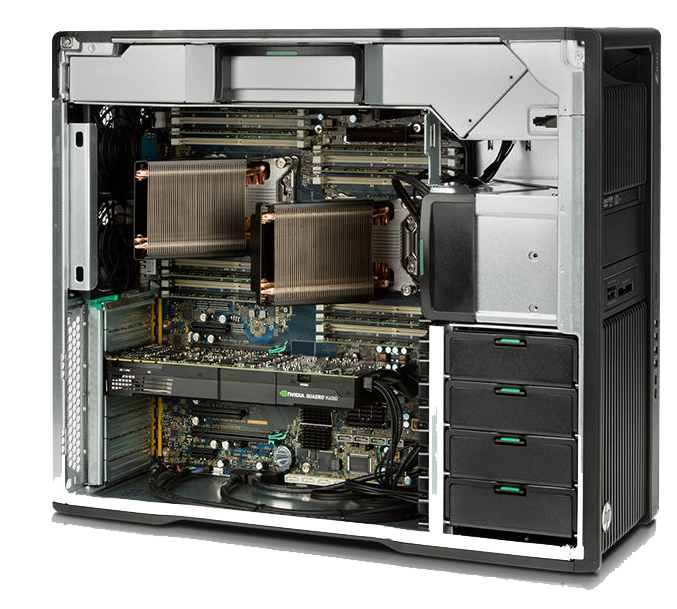 How customizable are these machines? How have you seen users expand their capabilities?
How customizable are these machines? How have you seen users expand their capabilities?
One fundamental characteristic of the HP Z Workstations is that each model is completely configure to order. There are a wide range of processors, memory configurations, graphics, storage and operating systems that can be configured in the workstation. This allows users to customize their workstation to fit their usage, performance and budget requirements. The Z Workstations provide future proofing in that they can be continually updated over their 2-3 year lifecycle, by adding components, to meet the changing needs of the user. When designing any of our workstations our engineers review all the component roadmaps (processor, graphics, memory, storage, etc) over the expected lifecycle of the platform and work to insure that the workstation can accommodate the latest components as they are made available by the component vendor. As an example, new technology such as Thunderbolt, 1866MHz memory and Z Turbo Drive were all seamlessly added to the Z420, Z620 and Z820 well into their lifecycles.
We have customers that load our high-end Z8 platform with ½ TB of system memory, multiple graphics, 15TB of storage and dual multi-core processors.
These machines contain multi-core Intel® Xeon® processors, but what does that mean for users in a practical sense?
Multiple processing cores allow a user’s workload (rendering, simulation) to be divided into smaller pieces that can be executed in parallel. Executing the workload pieces in parallel, in contrast to serial execution, results in overall faster time to completion. For example, frame rendering is a process that lends itself very well to multicore processing. The result is that as processing cores are added there is essentially a linear decrease in time to complete the render. What this means to a filmmaker is that they are able to render more frames per hour or add greater realism detail. With films today requiring nearly 100 million render hours during film production, there is a tremendous benefit with parallelizing the computation across many CPU cores and graphics processors.
And along those same lines, what kind of difference can users expect to see and experience with the graphics cards from AMD and NVIDIA that come installed in these workstations?
HP Z Workstations offer users a broad lineup of professional graphics from 2D to the extreme 3D class. HP Workstations include graphics accelerators from both AMD and NVIDIA providing users with the range of options necessary to meet their compute and rendering requirements. Gone are the days where the graphics accelerator simply provided a display output with ancillary graphics and geometry processing. Today the graphics processing unit (GPU) is an essential processing component in the compute and rendering solution. The feature film Gone Girl was the 1st feature film to be shot entirely in 6K using HP Z Workstations employing the latest generation of NVIDIA Quadro GPUs. Although the film was shot in 6K it was framed for 5K allowing the ability to reframe every shot. This reframing of the 6K video created tremendous demands on the system which could not be satisfied by using the CPU alone. The graphics processor was used as an essential processing element (in addition to the multi-core CPUs) enabling editing to be accomplished with near zero latency.
Now that we’re at the stage where 75mb frames are becoming a reality, how has and will storage considerations come into play?
In developing any of our HP Workstations, we focus on achieving the best possible “Solution Performance”. “Solution Performance” represents the collection of all software and hardware which comprises the workstation. Since we are looking at the entire solution (as opposed to individual pieces), the performance that is experienced by a user is only as great as the slowest component. Processors, system memory and graphics have made tremendous advancements in performance over the past several product generations. The performance advancements in these other areas has created a severe performance bottleneck with respect to the storage subsystem. The introduction of Solid State Drives (SSDs) provided some performance relief but, looking again at the overall solution, these are limited by the performance bandwidth supplied by the buses that connect the SSDs to the system. To help remove this storage bottleneck, HP introduced the Z Turbo Drive which relieves this bottleneck by using the very high performance PCI Express bus to connect to solid state storage devices. This huge step function in storage performance is achieved at the same cost of standard SSDs. Thus, the HP Z Turbo Drive changes the price/performance value equation. The result of HP’s Z Turbo Drive innovation is an overall increase in “Solution Performance” enabling users to work more productively with 4K and higher workflows at no additional cost over existing solid state drives.
Is there a learning curve around these machines for anyone looking to move away from a Mac environment?
One fundamental difference, of course, is with respect to the different operating systems. Despite this difference, most users report little to no difference for major creative applications from Adobe, Autodesk and AVID. Most applications allow projects to be copied directly over from the Mac to the Z Workstation. Easy file transfers can be done over the network or using a Thunderbolt drive. All this combines enabling the upgrade to an HP Z Workstation a seamless experience.
Several industry leaders have already made the transition from Mac to HP Z Workstations:
http://www8.hp.com/us/en/campaigns/workstations/mac-to-z.html?jumpid=va_r10048_mac_to_z_march2014
What would you say to someone who is considering moving to a HP Z Workstation but isn’t sure how that will impact their business or even the way they work on a day-to-day basis?
I would first ask questions in order to fully understand their work environment — what their usage model is, the applications and operating systems they are using, the size of the workloads they are using. I would also ask them to consider the “cost” of time in their business. How much is time worth in your production? Are you on tight deadlines? Are your customers demanding higher levels of realism and quality and is your industry demanding faster time-to-market? Is the creativity of your users currently being hindered by erratic or slow rendering times? A slow or non-responsive system hinders the creative process and this delays project completion as well as overall production quality. HP Z Workstations are developed to allow the user to spend their time creating and telling their story which has the impact of higher quality productions that are delivered on schedule.
The HP Z Workstation family is designed, tested and manufactured to provide reliable solutions that improve user productivity even under the most stressful workloads. HP Z Workstations are designed for 24x7x365 operation. Each of our workstation models can be custom tailored to precisely meet the budget and solution requirements of the end user. Depending on the intended work environment, we work with users to select the right workstation model and the best configuration of that model to meet their current and future requirements.

Filmtools
Filmmakers go-to destination for pre-production, production & post production equipment!
Shop Now
